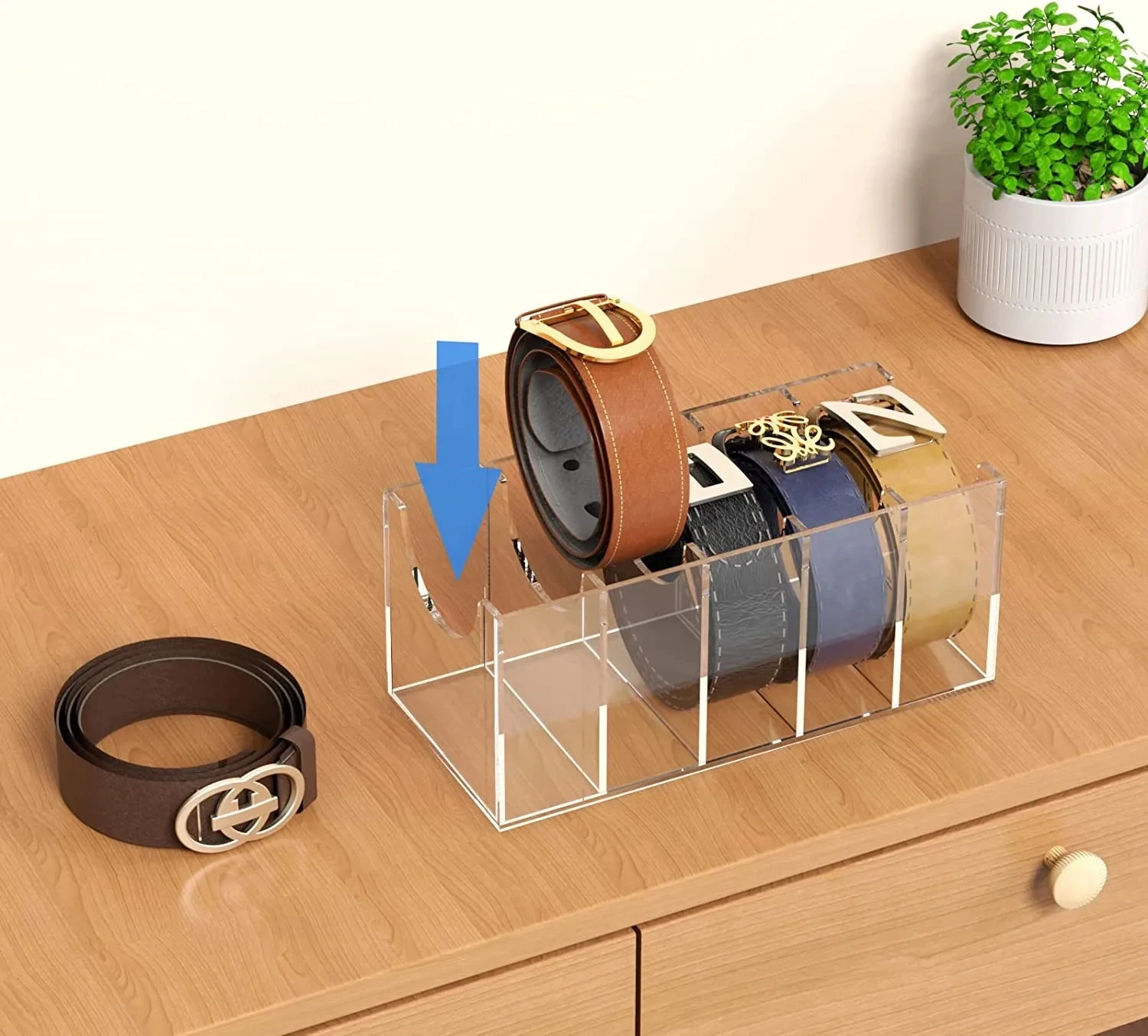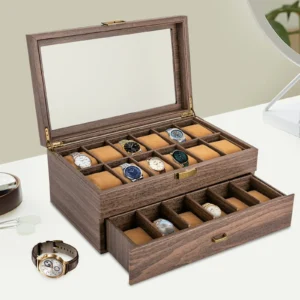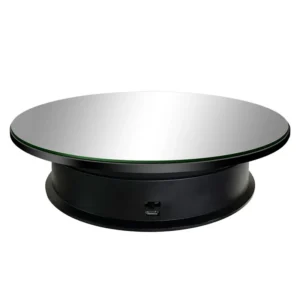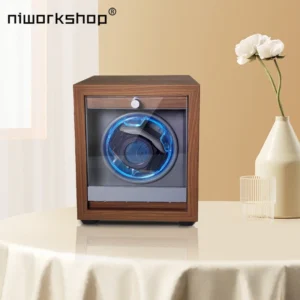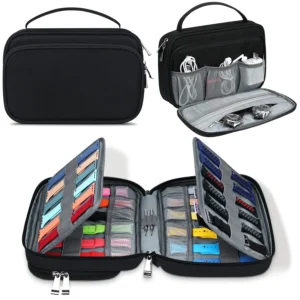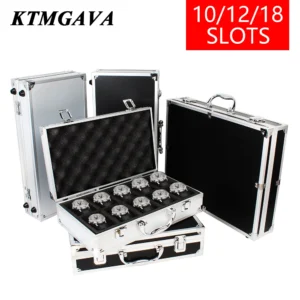Introduction: Transform Your Timepiece Collection into a Work of Art
Wall-mounted watch holders represent a revolutionary approach to timepiece storage, transforming functional accessories into showcased artwork for your home. These specialized displays allow collectors to elevate their watches from hidden drawer treasures to prominent decorative elements that enhance interior design while providing practical benefits.
The shift toward wall displays marks an important evolution in watch collecting culture. Rather than tucking precious timepieces away in traditional boxes, enthusiasts now celebrate their collections as expressions of personal style and craftsmanship appreciation. This approach acknowledges that fine watches deserve to be seen and admired daily, not just when worn.
Wall-mounted displays offer multiple advantages over conventional storage:
– They transform empty wall space into functional display areas
– They allow immediate visual appreciation of your entire collection
– They provide easier access for daily wear selection
– They create conversation-starting decorative elements in any room
In this comprehensive guide, you’ll discover everything needed to select, install, and maintain the perfect wall display for your timepieces, whether you have a modest collection or an extensive array of luxury watches.
The modern approach to displaying watches at home recognizes that timepieces represent both functional tools and artistic achievements worthy of presentation. Quality watch display holders help collectors transition from merely storing watches to proudly exhibiting them.
Essential Benefits of Wall-Mounted Watch Displays
Before exploring specific options, understanding the key advantages of wall-mounted displays helps clarify why they’ve become increasingly popular among collectors of all levels.
Space Optimization
Traditional watch boxes consume valuable surface area on dressers, nightstands, or closet shelves. Wall displays utilize vertical space that typically goes unused, making them perfect for urban living where square footage comes at a premium. A collection of twelve watches might require an entire dresser top in box form but needs only two square feet of wall space when properly mounted.
Visual Appreciation
Unlike watches hidden in drawers or boxes, wall-mounted displays keep your entire collection visible at all times. This constant visibility allows you to enjoy your investments daily, appreciating subtle dial details, strap variations, and the craftsmanship that makes each piece special—even when not wearing them.
Protection Elements
Quality wall displays provide significant protection benefits:
– Elevation reduces dust accumulation compared to horizontal surfaces
– Proper mounting prevents accidental knocks or drops
– Reduced handling minimizes wear on clasps, bracelets and crowns
– Some enclosed models offer humidity and UV protection
Accessibility Advantages
Wall displays transform the morning watch selection process from rummaging through boxes to simply choosing from an organized display. This accessibility encourages rotation through your collection rather than defaulting to the same few convenient pieces.
Statement Piece
A thoughtfully arranged watch display transforms a personal collection into a striking decorative element that reflects your personality and taste. Like gallery installations, these displays elevate common objects to artistic status, creating natural conversation starters when entertaining guests.
Value Showcase
For those who view watches as investments, proper display acknowledges their financial and emotional value. Museums and luxury retailers understand this psychology well—their display techniques highlight craftsmanship and rarity, principles that transfer beautifully to home collections.
Showcase watch collector displays have become increasingly sophisticated, offering options for collections of all sizes. The right watch holder solution balances protection with presentation, transforming ordinary walls into personalized exhibition spaces.
Understanding Different Types of Wall-Mounted Watch Holders
Wall-mounted watch holders come in various designs ranging from fully enclosed cabinets that prioritize protection to minimalist open displays that emphasize accessibility and aesthetics. The right choice depends on your collection value, local environment, security concerns, and personal style preferences.
When selecting between styles, consider the trade-offs: enclosed cases offer superior protection from dust, humidity, and unauthorized handling but may limit accessibility and visibility through glass reflections. Open displays provide instant access and clearer viewing but leave watches more exposed to environmental factors.
The number of watches in your collection also influences the appropriate display type. Smaller collections of 3-6 watches often work well with simple open racks, while larger collections benefit from more structured systems that maintain organization as your collection grows.
Understanding these fundamental differences helps narrow your options before exploring specific styles in depth. Creating the ultimate watch display requires balancing protection with presentation, while familiarity with watch display terminology helps navigate the available options.
Enclosed Watch Display Cases: Maximum Protection
Enclosed watch display cases represent the premium protection category of wall-mounted solutions. These cabinets feature transparent fronts—typically glass or high-grade acrylic—with fully enclosed sides, tops, and bottoms to create sealed environments for valuable collections.
Protection Features:
– Complete dust protection through sealed designs
– Optional humidity control through silica gel packets or built-in systems
– Security features including locks and reinforced mounting hardware
– Protection from accidental bumps and environmental factors
The materials used in quality enclosed displays reflect their protective purpose. Premium hardwoods like walnut, oak, and mahogany provide structural integrity while offering classic aesthetic appeal. Metal-framed cases with tempered glass deliver contemporary styling with maximum visibility.
Many higher-end enclosed displays incorporate integrated LED lighting systems that illuminate watches without producing harmful heat. These lighting systems highlight dial details and create dramatic presentation effects, especially in rooms with subdued ambient lighting.
Capacity options typically range from 6 to 24 watches, with interior configurations featuring padded slots, adjustable cushions, or specialized bracelet holders. Some multi-tier designs maximize capacity while maintaining visibility for each piece.
Aesthetically, enclosed cases make stronger visual statements than minimalist options, functioning as furniture pieces that command attention. This makes them particularly suitable for dedicated watch rooms, offices, or master bedrooms where they serve as focal points.
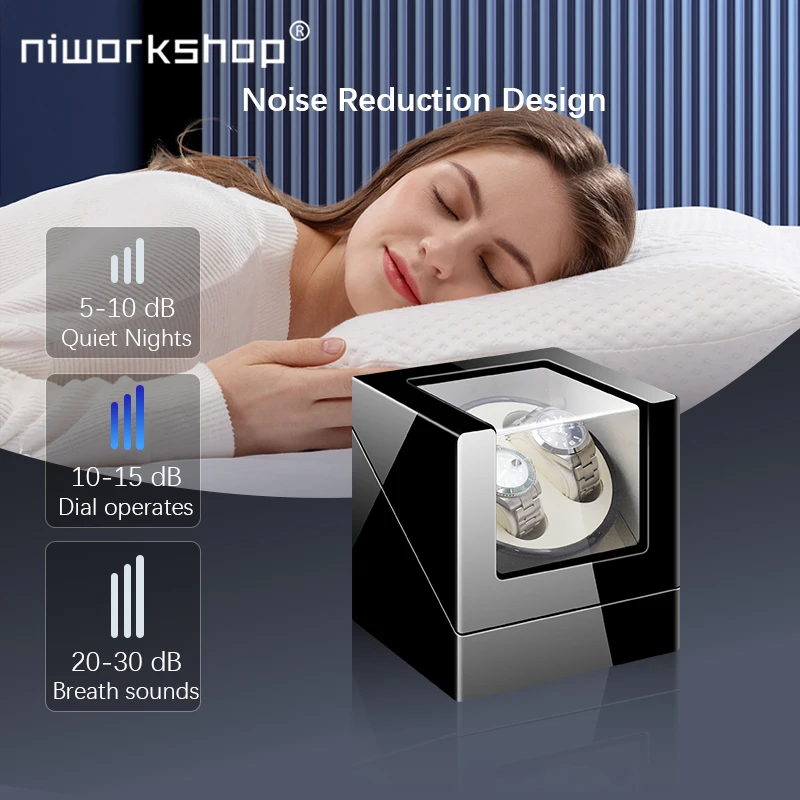
For collectors with valuable timepieces, the watch display case category offers extensive options combining security with presentation excellence.
Open Watch Racks and Shelves: Modern Accessibility
Open watch racks and shelves prioritize accessibility and clean aesthetics over maximum protection. These designs feature exposed holders that display watches without barriers, creating striking visual presentations while allowing instant access for daily wear.
Accessibility Advantages:
– One-motion selection without opening doors or lids
– Unobstructed viewing without glass reflections
– Easy rotation of displayed pieces
– Simpler installation with fewer moving parts
– Generally more affordable than enclosed alternatives
Materials commonly used in open displays include solid hardwoods for warmth and tradition, metals (particularly aluminum and stainless steel) for modern appeal, and acrylics for contemporary minimalism. Many designs combine materials—such as wood bases with metal watch posts—to create visual interest.
Popular open display styles include:
– Floating shelves with integrated watch bars or cushions
– Wall-mounted rails with extending watch posts
– Framed displays with watch cushions arranged gallery-style
– Stand-off bracket systems that create floating effects
These open designs integrate exceptionally well with contemporary home aesthetics, particularly in minimalist, industrial, and Scandinavian-inspired spaces. Their clean lines and functional approach complement modern decor without overwhelming other design elements.
While offering less protection than enclosed cases, quality open displays can be surprisingly secure when properly installed. Many feature reinforced mounting systems and specialized holders that grip watches securely while preventing scratches to cases or bracelets.
For collectors who wear different watches frequently and appreciate modern design, wooden watch holder solutions and other open systems provide ideal combinations of accessibility and display impact. Minimalist watch holders for small areas work particularly well in apartments or bedrooms where space efficiency matters.
Modular Peg Systems: Versatility and Expansion
Modular peg systems represent the most adaptable watch display category, allowing continuous customization as collections evolve. These systems typically feature a base panel with a grid of holes or slots that accept various accessory pegs, hooks, and shelves configured to the owner’s specifications.
Versatility Benefits:
– Rearrangeable layouts that adapt to changing collections
– Mixed-use potential for watches and complementary accessories
– Expansion capability without replacing the entire system
– Customizable spacing for watches of different sizes
Most modular systems use perforated hardboard, slat walls, or custom-drilled panels as their foundations. Higher-end versions upgrade standard pegboard materials to hardwoods, metals, or acrylics for enhanced aesthetics while maintaining full functionality.
Watch-specific pegs and accessories include cushioned posts, bracelet bars, angled display mounts, and specialized holders for unusual case shapes. This adaptability makes modular systems particularly valuable for collectors with diverse collections featuring both strap and bracelet watches of varying sizes.
Aesthetically, modular systems range from utilitarian to refined depending on materials and design choices. Industrial-inspired metal systems with exposed hardware offer tool-wall organization for practical collectors. In contrast, wooden grid systems with precision-milled components can achieve gallery-quality presentation for luxury collections.
The expandable nature of these systems makes them ideal for growing collections. Rather than replacing an entire display when reaching capacity, collectors simply add components to accommodate new acquisitions, making these systems cost-effective long-term solutions.
Custom and Artisan-Crafted Solutions: Personalized Perfection
For collectors seeking truly unique presentations, custom and artisan-crafted display solutions offer unmatched personalization. These bespoke displays are designed specifically for individual collections, spaces, and aesthetic preferences without the constraints of mass production.
The custom design process typically begins with consultation regarding collection characteristics, available space, and design preferences. Skilled craftspeople then develop concepts that seamlessly integrate with existing architecture and decor while showcasing watches to their best advantage.
Material options expand dramatically in custom work, including rare woods, architectural metals, specialized glass, stone accents, and integrated electronics. These premium materials combine in ways impossible in mass-produced displays, creating truly distinctive presentations.
Design possibilities include:
– Built-in wall displays with integrated cabinetry
– Illuminated niches with specialized watch mounting systems
– Motorized or rotating display elements
– Custom security features integrated with home systems
– Artistic interpretations that transcend conventional display concepts
While representing significant investments, custom solutions offer unmatched alignment with personal taste and specific collection needs. For serious collectors with valuable timepieces, these displays become functional art pieces that enhance both watches and interior spaces.
The value proposition extends beyond aesthetics—custom solutions can incorporate specialized protection features like UV-filtering glass, humidity control, and secure mounting designed specifically for your collection’s characteristics and your home’s particular environment.
Essential Selection Criteria: Finding Your Perfect Watch Display
Selecting the ideal watch display requires balancing numerous factors including collection characteristics, space constraints, aesthetic preferences, and protective requirements. The following criteria help narrow options to find your perfect match.
The most common selection mistakes stem from focusing too narrowly on immediate needs without considering future collection growth or changes in display preferences. A thoughtful selection process considers both current requirements and anticipated developments in your collecting journey.
The investment in quality display solutions pays dividends in both watch protection and presentation impact. While budget considerations matter, prioritizing durability and proper protection helps preserve the much larger investment represented by the watches themselves.
Exploring secure watch display options helps protect valuable collections, while understanding creative watch display alternatives expands possibilities beyond conventional solutions.
Collection Assessment: Size, Value, and Growth Plans
Before exploring specific display options, conduct a thorough assessment of your current collection and realistic growth expectations. This foundation ensures your selected display accommodates both present needs and future acquisitions.
Begin by categorizing your current collection by:
– Total piece count and physical dimensions
– Strap vs. bracelet configurations
– Special-sized pieces (oversized, ultra-thin, unusual shapes)
– Value tiers requiring different protection levels
– Wearing frequency (daily rotation vs. occasional wear)
Next, project realistic growth patterns based on collecting history and interests. Most collections expand by 20-30% over five years, though active collectors may double their holdings in that timeframe. Consider both quantity increases and potential changes in watch types or styles.
Physical space requirements depend on both watch quantities and types. Standard men’s watches typically require 2-3 inches (5-7.5 cm) of display width, while larger sports watches may need 3-4 inches (7.5-10 cm). Watches on bracelets generally require more depth than those on leather or fabric straps.
Common display capacities include 4, 6, 8, 12, 16, and 24 positions, with modular systems offering virtually unlimited expansion. For growing collections, selecting displays with 30-50% more capacity than currently needed provides room for expansion without immediate replacement.
Value considerations significantly impact protection requirements. Collections containing investment-grade timepieces generally benefit from enclosed displays with security features, while more modest collections may prioritize accessibility over maximum protection.
Material Considerations: Balancing Aesthetics and Protection
Display materials significantly impact both protection effectiveness and visual presentation. Understanding material characteristics helps match displays to both functional requirements and home aesthetics.
| Material | Protection Level | Aesthetic Style | Durability | Environmental Concerns |
|---|---|---|---|---|
| Hardwood | High | Traditional/Warm | Excellent | Humidity sensitivity |
| Metal | Medium-High | Modern/Industrial | Excellent | Temperature conductivity |
| Acrylic | Medium | Contemporary/Minimalist | Good | UV yellowing potential |
| Glass | High | Elegant/Showcase | Good | Breakage risk |
| Velvet/Suede Lining | High | Luxury/Protective | Medium | Dust attraction |
| Leather Lining | High | Classic/Rich | Good | Humidity sensitivity |
| Microfiber Lining | Medium-High | Modern/Practical | Good | Static potential |
Hardwoods like walnut, oak, and mahogany offer excellent protection with traditional appeal. These materials provide stability, scratch resistance for watch cases, and complement classic home decor. However, they require attention to humidity levels to prevent warping.
Metals—particularly aluminum, stainless steel, and brass—create modern, industrial aesthetics while offering excellent structural integrity. Metal displays typically feature complementary materials for watch contact surfaces to prevent scratching.
Acrylic and glass elements provide visibility in enclosed displays, with trade-offs between the two. Glass offers superior scratch resistance and clarity but adds weight and breakage risk. High-grade acrylics provide impact resistance with modest weight penalties but may show fine scratches over time.
Interior lining materials directly contact watches and provide critical protection. Velvet and suede offer superior scratch prevention but attract dust. Leather provides excellent protection with classic appeal but requires humidity consideration. Microfiber offers practical protection with minimal maintenance requirements.
Material selections should consider local environmental factors—particularly humidity levels, temperature fluctuations, and sun exposure—as these significantly impact material performance and watch preservation.
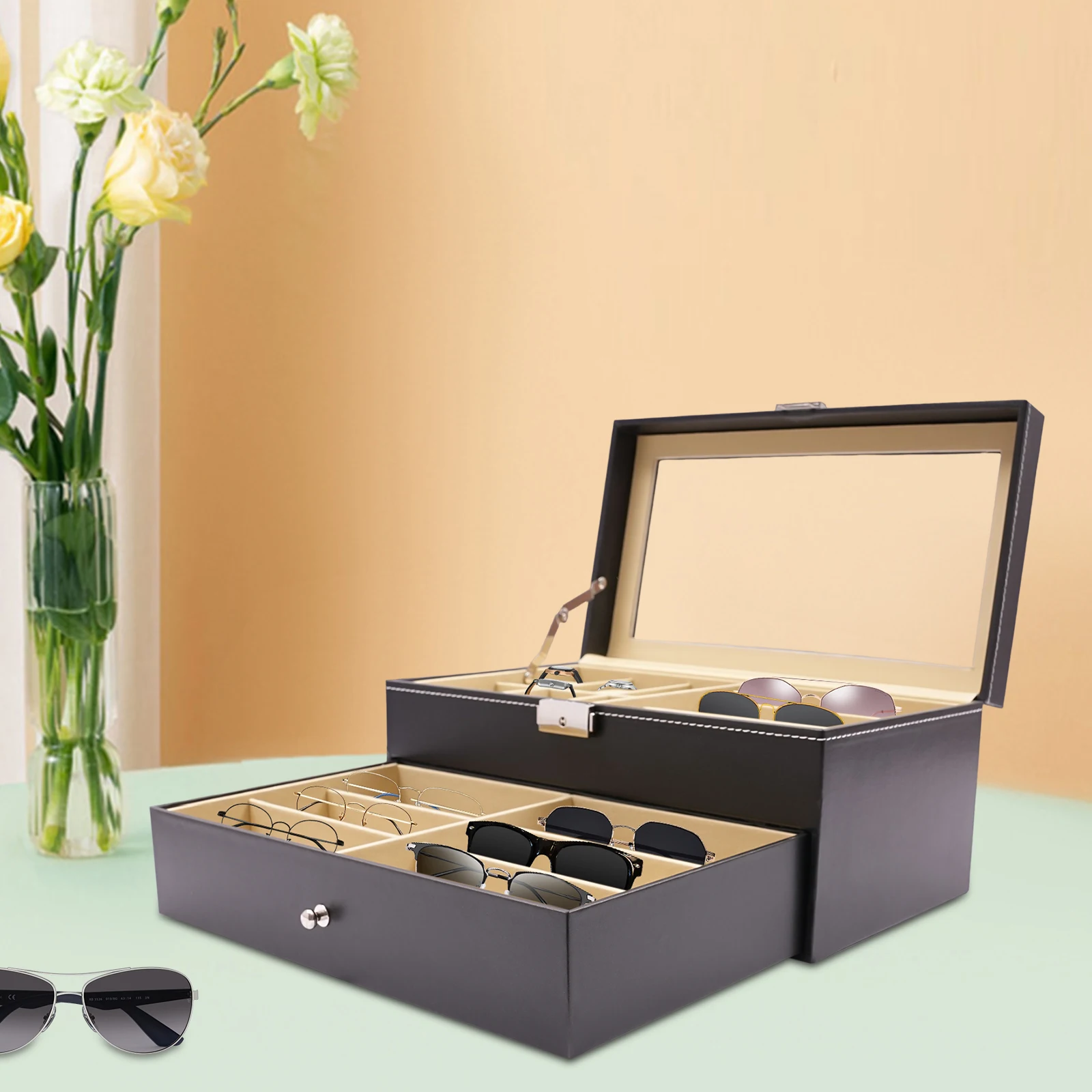
Installation Requirements: Practical Mounting Considerations
Proper installation ensures both security and visual impact for wall-mounted displays. Understanding installation requirements before purchase prevents disappointment and potential damage to both walls and watches.
Pre-Purchase Assessment:
– Identify wall construction (drywall, plaster, concrete, wood paneling)
– Locate wall studs or structural supports using stud finders
– Consider proximity to direct sunlight, heating vents, and humidity sources
– Measure available wall space including height, width, and clearance
– Evaluate lighting conditions throughout the day
Mounting Height Considerations:
The optimal viewing height places watch centers approximately 60 inches (152 cm) from the floor—eye level for most adults. For frequently accessed collections, positioning slightly lower (50-55 inches or 127-140 cm) improves reach comfort. Display width determines horizontal positioning, with center alignment on available wall space typically providing balanced visual impact.
Weight Support Requirements:
Fully loaded displays can weigh significantly more than empty units. Standard watch displays with 6-8 timepieces typically weigh 5-15 pounds (2.3-6.8 kg) when loaded, while larger cabinets holding 20+ watches can exceed 30 pounds (13.6 kg). Wall anchoring must accommodate these weights plus a safety margin.
Installation Hardware by Wall Type:
– Drywall without studs: Use toggle bolts or snap toggles rated for 2-3 times display weight
– Drywall with available studs: Use wood screws directly into studs for maximum security
– Plaster walls: Require specialized anchors and careful pre-drilling to prevent cracking
– Concrete/brick: Need masonry anchors installed with hammer drills
– Wood paneling: Screw directly into backing structure when possible
Tool Requirements:
Basic installations typically require: stud finder, level, measuring tape, pencil, drill with appropriate bits, screwdriver, and wall anchors specified by display manufacturer. Heavier or specialized displays may require additional tools or professional installation.
Proper installation takes time—typically 30-60 minutes for standard displays and longer for complex systems or difficult wall materials. This investment in careful mounting pays dividends in security and presentation quality.
Security and Protection Features: Safeguarding Your Investment
For collections of significant value, security and protection features become essential considerations when selecting display systems. These features safeguard watches against environmental damage, theft, and accidental impacts.
Environmental Protection:
– UV filtering: Critical for preventing dial fading and strap deterioration, especially for displays near windows. Look for acrylic or glass with 99% UV protection.
– Dust prevention: Enclosed cases with proper seals dramatically reduce dust accumulation on watches, minimizing cleaning frequency and potential scratch risks.
– Humidity control: Optimal watch storage maintains 45-55% relative humidity. Some premium displays incorporate hygrometers or humidity control materials to monitor and regulate moisture levels.
Security Options:
– Locking mechanisms: From simple key locks to digital combinations, these prevent unauthorized handling of valuable pieces.
– Secure mounting: Concealed mounting hardware and security screws prevent simple removal of the entire display.
– Tamper indicators: Some high-end displays include features that show if the case has been opened in the owner’s absence.
– Integration potential: Premium systems may connect with home security for additional protection.
Lighting Considerations:
While proper lighting enhances display impact, improper lighting can damage watches. LED systems provide ideal illumination with minimal heat and UV emission. Avoid halogen or direct sunlight exposure, which can fade dials and degrade straps over time.
Balance with Accessibility:
Security features must balance with practical access for the collector. Overly complicated locking systems discourage regular wear rotation, while inadequate security leaves valuable pieces vulnerable. The ideal solution provides sufficient security while maintaining reasonable convenience for the owner’s wearing habits.
For collections containing investment-grade timepieces, these security considerations often justify the higher cost of premium display systems, especially when the protected value represents a significant investment.
Practical Installation Guide: From Selection to Display
Once you’ve selected the perfect watch display, proper installation ensures both security and aesthetic impact. This step-by-step guide covers the entire process from preparation to final watch placement.
Required Tools and Materials:
– Stud finder
– Level (24-inch recommended)
– Measuring tape and pencil
– Drill with appropriate bits (including masonry bits for concrete walls)
– Screwdriver (matching hardware provided with display)
– Wall anchors rated for your display weight
– Painter’s tape for marking positions
– Helper for holding larger displays during mounting
Preparation Steps:
1. Unpack your display and verify all hardware is included
2. Identify ideal height and position on your wall
3. Use a stud finder to locate and mark wall studs with painter’s tape
4. Hold display against wall at desired position and mark corners lightly in pencil
5. Measure distances between mounting points on your display
6. Transfer those measurements precisely to your wall, verifying level alignment
Installation by Wall Type:
For Drywall with Available Studs:
1. Mark stud centers within your installation area
2. Pre-drill pilot holes into studs using bits smaller than your screws
3. Attach mounting brackets or directly attach display to wall using provided hardware
4. Verify level before final tightening
For Drywall without Studs:
1. Mark anchor positions according to display mounting points
2. Drill appropriate-sized holes for your wall anchors (typically 1/2 inch or 12mm for toggle bolts)
3. Install anchors according to manufacturer instructions
4. Attach display to anchors, checking level before final tightening
5. Test security by applying gentle downward pressure
For Masonry Walls:
1. Mark drilling positions precisely
2. Use masonry bit with hammer drill function to create holes
3. Insert appropriate concrete anchors
4. Attach display brackets or mount directly to installed anchors
5. Verify level and security
Final Adjustments:
1. Clean display thoroughly before adding watches
2. Test any doors, drawers, or moving parts for smooth operation
3. Add watches carefully, organizing by type, color, or wearing frequency
4. Adjust any internal lighting to highlight collection features
For heavy or particularly valuable displays, consider professional installation. The modest cost provides peace of mind regarding both wall integrity and display security.
Comparing watch display stands to display boxes can help determine if your selected solution meets both aesthetic and functional needs.
Creative DIY Watch Display Projects
For those with basic crafting skills, creating custom watch displays offers both cost savings and personal expression opportunities. DIY approaches allow precise matching to specific collections and interior designs while typically costing 30-60% less than comparable retail options.
Before starting any DIY display project, consider these important factors:
– Ensure structural integrity sufficient to securely hold valuable watches
– Use watch-safe materials that won’t scratch cases or damage straps
– Create sufficient spacing between watches to prevent contact damage
– Consider dust and environmental protection needs
– Plan for collection growth beyond current needs
Basic woodworking skills suffice for most DIY watch displays. Essential tools include measuring instruments, cutting tools appropriate to your materials, sanding equipment, and basic assembly hardware. Always prioritize safety with proper eye protection and work area preparation.
Custom projects allow creative freedom impossible with commercial displays. Consider incorporating personal elements like favorite woods, complementary metals from other decor items, or design motifs that reflect other interests beyond watches.
Exploring watch accessories can provide components useful in DIY projects, including cushions, holders, or specialized display elements that integrate into custom creations.
Repurposed Shadow Box Display Project
Shadow boxes—deep picture frames originally designed for memorabilia display—convert easily into elegant watch displays with minimal modifications. This beginner-friendly project requires few specialized tools while creating professional-looking results.
Materials Needed:
– Deep shadow box frame (minimum 2 inches or 5 cm depth)
– Foam board or sturdy cardboard backing
– Display fabric (velvet, suede, or linen)
– Watch cushions or foam pipe insulation
– Fabric adhesive or hot glue gun
– Scissors and craft knife
– Measuring tape and pencil
Step-by-Step Process:
1. Remove glass and backing from shadow box frame
2. Measure interior dimensions and cut foam board to fit precisely
3. Cut display fabric approximately 2 inches (5 cm) larger than foam board on all sides
4. Wrap fabric around foam board, pulling taut and securing to back with adhesive
5. For watch cushions, either:
– Purchase pre-made watch cushions (approximately 2 inches or 5 cm wide)
– Create DIY cushions from foam pipe insulation cut to 2-inch (5 cm) lengths and wrapped in matching fabric
6. Determine watch spacing and attach cushions to fabric-covered board using adhesive
7. Allow complete drying before placing in frame
8. Secure backing according to frame design
9. Mount on wall using appropriate anchors for weight
Customization Options:
– Add small drawer pulls as decorative elements between watches
– Create multiple tiers for larger collections using foam board risers
– Incorporate LED light strips around interior frame edges
– Use contrasting fabric colors to highlight specific watches
This project typically costs $30-60 depending on materials chosen and accommodates 4-8 watches depending on shadow box dimensions.
Wooden Dowel Display Rack Project
For a more modern, open display aesthetic, this wooden dowel rack creates a distinctive presentation for watches with straps or expandable bracelets. This intermediate project requires basic woodworking skills but creates a high-impact display.
Materials Needed:
– Hardwood board (approximately 4×24 inches or 10×60 cm)
– Wooden dowels (3/4 inch or 19 mm diameter)
– Wood finish (stain, oil, or clear coat)
– Drill with 3/4 inch (19 mm) spade or Forstner bit
– Sandpaper (various grits from 120-220)
– Wood glue
– Measuring tape and pencil
– Picture hanging hardware
Step-by-Step Process:
1. Sand base board to remove any rough edges, progressing through sandpaper grits
2. Measure and mark dowel positions, spacing them 3-4 inches (7.5-10 cm) apart
3. Drill holes approximately 1/2 inch (12 mm) deep using 3/4 inch (19 mm) bit
4. Cut dowels to desired length (typically 4-6 inches or 10-15 cm)
5. Sand one end of each dowel to slightly round the edges
6. Apply chosen finish to all wood pieces and allow complete drying
7. Insert dowels into drilled holes with wood glue
8. Allow 24 hours for glue to cure completely
9. Attach picture hanging hardware to back of base board
10. Mount securely to wall using appropriate anchors
Design Variations:
– Create a stepped or angled design for dramatic presentation
– Use contrasting woods for base and dowels
– Add small wooden shelf above or below dowels for accessories
– Incorporate metal elements for industrial aesthetic
– Create multiple rows for larger collections
This display works best for watches with straps or expandable bracelets that slip over the dowels. The typical cost ranges from $20-40 depending on wood types selected, and the project accommodates 6-8 watches in the standard configuration.
Where to Find Quality Wall-Mounted Watch Displays
Watch Accessories, Watch Holder
$94.51 Select options This product has multiple variants. The options may be chosen on the product pageMen's Watch Organizer, Watch Display Case, Watch Organizer
Price range: $112.68 through $169.45 Select options This product has multiple variants. The options may be chosen on the product pageRotating Watch Holder, Watch Holder
Price range: $93.28 through $93.35 Select options This product has multiple variants. The options may be chosen on the product pageAutomatic Watch Winder, Single Watch Winder, Wooden Watch Holder
$201.76 Select options This product has multiple variants. The options may be chosen on the product pageWatch Organizer, Watch Roll Travel Case
Price range: $88.39 through $99.36 Select options This product has multiple variants. The options may be chosen on the product page12 Watch Box, Watch Display Case, Watch Organizer
Price range: $101.20 through $141.30 Select options This product has multiple variants. The options may be chosen on the product page
Finding the perfect watch display requires knowing where to look beyond standard retail channels. Quality options exist across various price points and styles, though finding the ideal match often requires exploring multiple sources.
When evaluating potential purchases, examine these critical quality indicators:
– Materials: Look for solid woods rather than veneers, tempered rather than standard glass, and precision hardware
– Construction details: Dovetail joints, smooth-operating hinges, and felt-lined surfaces indicate quality craftsmanship
– Weight: Quality displays typically have substantial weight indicating solid materials
– Reviews: Look beyond star ratings to specific comments about durability and functionality
– Return policies: Quality manufacturers stand behind their products with reasonable policies
Red flags indicating poor quality include:
– Vague material descriptions (“wood finish” often means wood-look vinyl)
– Significantly lower pricing than similar products without clear reason
– Poor quality images or limited views of the product
– Generic descriptions without specific details
– No information on weight capacity or mounting requirements
When shopping for displays, carefully examine product specifications for details about:
– Exact dimensions of both exterior and interior spaces
– Maximum watch sizes accommodated
– Weight when empty and recommended wall mounting hardware
– Materials used for watch contact surfaces
– Any included protection features
For consistent quality and specialized designs, watch organizer collections offer solutions developed specifically for timepiece display and storage.
Proper Care and Maintenance of Your Watch Display
Maintaining your watch display ensures both its longevity and the protection of your timepiece collection. Regular care prevents dust accumulation, material deterioration, and potential damage to valuable watches.
Cleaning Techniques by Material:
– Wood displays: Dust with soft microfiber cloth; clean with specialized wood cleaner quarterly
– Glass surfaces: Use lint-free cloths with ammonia-free glass cleaner to prevent residue
– Acrylic components: Clean with mild soap solution and soft cloths only—never alcohol-based cleaners that cause clouding
– Metal elements: Dust regularly and clean fingerprints with appropriate metal cleaner
– Interior fabrics: Vacuum gently with brush attachment; spot clean with minimal moisture
Maintenance Schedule Recommendations:
– Weekly: Dust exterior surfaces and check watch positioning
– Monthly: More thorough cleaning of accessible components
– Quarterly: Deep cleaning including interior surfaces and hardware inspection
– Annually: Complete display emptying for comprehensive cleaning and inspection
Environmental Protection:
– Position displays away from direct sunlight to prevent fading and material damage
– Maintain consistent room temperature between 65-75°F (18-24°C)
– Keep relative humidity between 40-60% using dehumidifiers or humidifiers as needed
– Avoid placing displays near heating vents, fireplaces, or exterior doors with temperature fluctuations
Watch Rotation Practices:
– Periodically rotate watch positions to prevent pressure marks on display cushions
– For automatic watches, consider alternating between winder storage and static display
– Inspect watches during rotation for any signs of dust accumulation or strap compression
– Use rotation as opportunity to check display for any maintenance needs
With proper care, quality watch displays maintain their appearance and functionality for many years while providing optimal protection for your timepiece collection.
Inspiration Gallery: Stunning Watch Display Ideas
Watch displays transcend mere storage, becoming integral design elements that reflect personal style and elevate home interiors. These inspiration examples demonstrate the possibilities across different aesthetic approaches.
Contemporary Minimalism
Imagine a floating glass shelf with integrated LED lighting supporting a row of watches on minimalist cylindrical posts. The transparent materials create an illusion of watches suspended in space, while hidden mounting hardware maintains clean lines. This approach particularly complements modern interiors with neutral color palettes and architectural simplicity.
Vintage Collector’s Cabinet
A wall-mounted mahogany cabinet with glass-fronted doors houses watches on angled display platforms lined with burgundy velvet. Interior lighting highlights dial details, while the cabinet’s exterior features detailed woodworking that echoes vintage watch case designs. This style integrates beautifully with traditional libraries, offices, or collection rooms featuring other antiquarian interests.
Industrial Sophistication
Black steel framing with exposed hardware elements combines with reclaimed wood shelving to create multi-tier watch displays. Contrast between raw materials and precisely crafted timepieces creates visual tension while showcasing watches as mechanical art. This approach works particularly well in loft apartments, converted industrial spaces, or rooms with existing metal architectural elements.
Integrated Dressing Area
A built-in watch display between wardrobe sections creates a comprehensive dressing area where daily accessories remain visible and accessible. Watches arranged by style or color complement nearby clothing options, turning morning selection into a curated experience rather than a search through drawers.
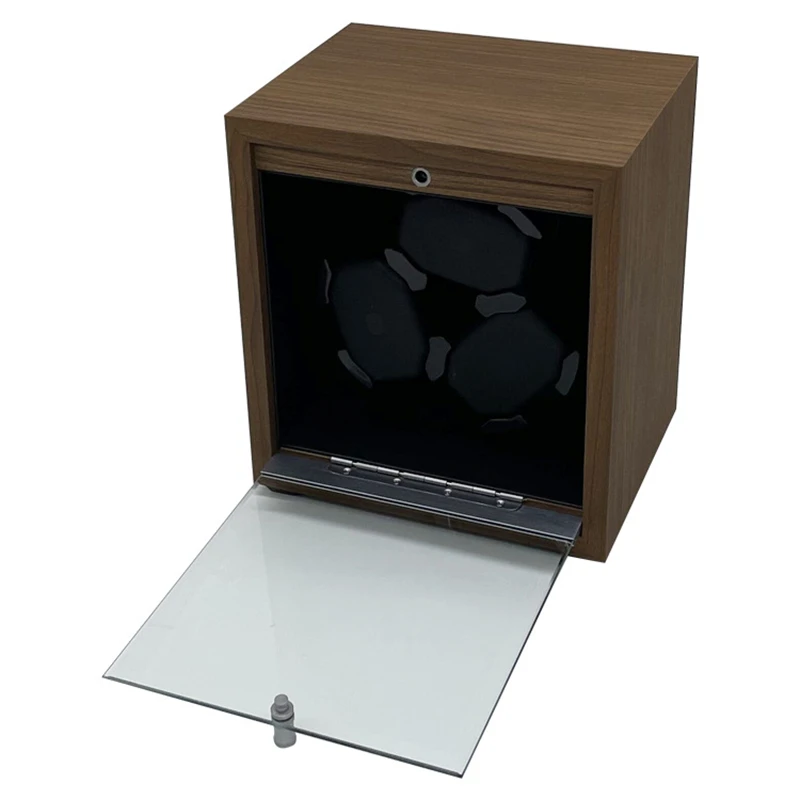
Illuminated Gallery Wall
A series of individually lit shadow boxes creates a gallery-like presentation where each watch receives focused attention. Varying frame sizes and arrangements transform the collection into a cohesive wall installation that balances visual interest with organized presentation. This approach particularly suits dedicated watch rooms or prominent wall spaces in master bedrooms.
For more creative approaches to presentation, explore decorative watch display guide for collectors and discover additional inspiration at Creative Watch Storage Ideas.
Common Questions About Wall-Mounted Watch Holders
Do wall-mounted displays provide adequate dust protection?
Enclosed wall displays with proper sealing offer excellent dust protection comparable to traditional watch boxes. Open displays require more frequent cleaning but simplify access. For maximum dust protection in open displays, position them away from high-traffic areas and consider glass-fronted options that allow visibility while minimizing dust exposure.
Will sunlight damage my watches in a wall display?
Direct sunlight poses significant risk to watches, potentially fading dials and damaging leather straps. Position displays away from windows receiving direct sun or select options with UV-filtering glass/acrylic. If ideal positioning isn’t possible, consider window treatments that block harmful rays during peak sun hours.
How difficult is installation for someone with basic DIY skills?
Most wall-mounted displays require moderate DIY skills comparable to installing shelving. Key success factors include proper wall anchor selection, careful measurement, and patience during installation. Typical installation times range from 30 minutes for simple displays to 2 hours for complex enclosed cabinets. When in doubt about structural support for valuable collections, consulting a professional installer provides peace of mind.
Can wall displays accommodate oversized watches?
Many collectors own oversized watches (45mm+ diameter) that require special accommodation. Quality displays typically specify maximum watch dimensions, with premium options offering adjustable spacing. For collections including oversized pieces, look for displays with at least 3 inches (7.5 cm) between watch centers and cushions designed for larger cases.
How do I incorporate watch winders into wall displays?
Several approaches work for combining static display with winding functionality:
– Dedicated watch winder sections within larger display cabinets
– Separate wall-mounted winder units positioned near static displays
– Modular systems allowing interchange between winder modules and static holders
– Rotation between winder storage in drawers and wall display for periodic wear
The guide to rotating watch display systems provides detailed information on combining winding functionality with attractive presentation.
Will mounting damage my wall, and how can I minimize it?
Quality displays include appropriate mounting hardware that distributes weight properly. Using recommended anchors and finding wall studs when possible minimizes damage. For renters or those concerned about wall preservation, consider displays that mount using removable systems or stand-off brackets that require minimal wall penetration.
How can I expand my display as my collection grows?
Planning for growth from the beginning prevents future display challenges. Consider:
– Modular systems designed for expansion
– Selecting initial displays with 30-50% more capacity than currently needed
– Choosing consistent styles that work well side-by-side when additional units are added
– Wall positioning that allows for horizontal expansion
With thoughtful selection and proper installation, wall-mounted watch holders transform collections from stored possessions to displayed treasures that enhance daily enjoyment and home aesthetics.

